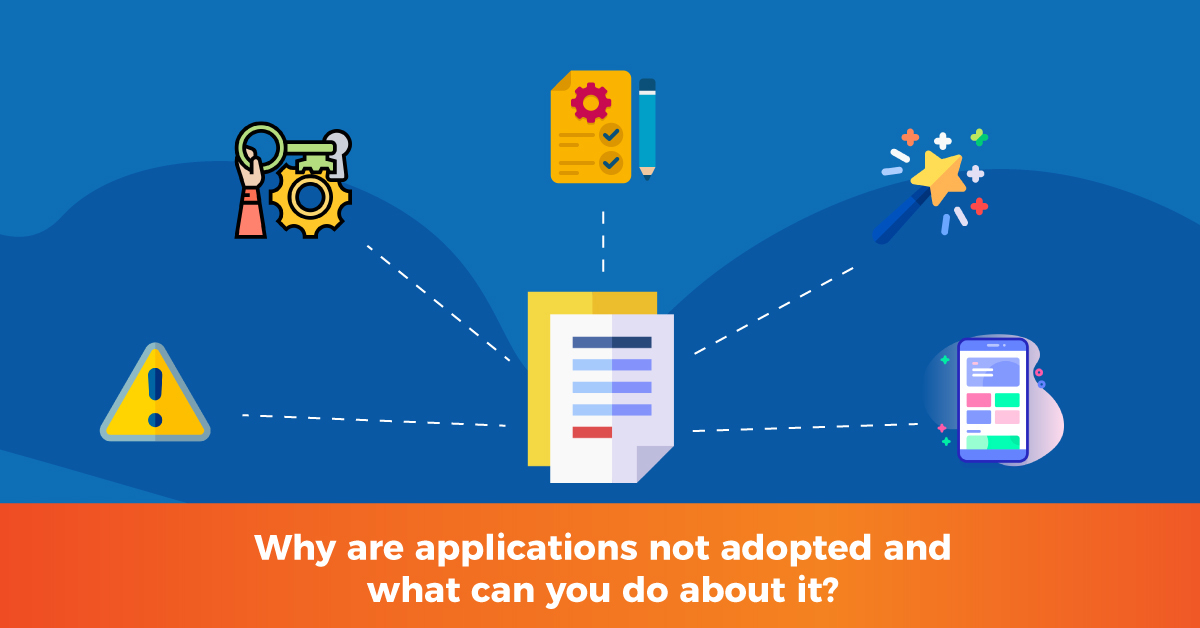
Summer vacations are done, fall semesters have begun, and organizations like yours and ours are gearing up to end the year strong.
However, I was reminded of something.
Is there a reason why applications aren't being adopted, and what can be done to change that?
It's infuriating when CEOs choose a terrific solution only to realize that the application is up and running but the team isn't utilizing it months later.
Unfortunately, the success or failure of any application installation has very little to do with the IT teams.
Kevin Spanner of Digital Maturity Group presents us with seven essential things that will almost certainly slip through the cracks between your management and your IT service provider or internal team.
Gather Problems not Solutions
Most businesses try finding solutions very quickly without evaluating the big picture.
They’d do better with a simple list of needed business improvements. Update it quarterly.
This list can compile the problems in the organization with their magnitude (small, medium, big) and their urgency (or lack of it). This spurs alignment within the organization on what problems need to be solved first. With clear priorities they can work more effectively on the resolutions.
For example
- Internal Sales has no transparency and too much manual work [big, urgent]
- Employees spend too much time communicating in email, meetings, and on the phone [medium, urgent]
- Our marketing is struggling to communicate the value to prospects [medium, urgent]
Create a Simple Application Roadmap
An organization has limited resources and cannot implement too much change at once.
Based on your list of problems the organization could start creating a simple application roadmap. This simple roadmap lists the potential solutions in a quarterly timeline.
They’re thinking more strategically and spreading effort on different applications over time.
For example
- Q2 - new CRM
- Q3 - internal chat tool
-
Q4 - new website and so on.
Focus on one major initiative at a time
Define the Requirements
Some organizations scramble for solutions and learn “what can be done” without specifying “what problems do we need to solve”.
It’s critical to list the results the organization needs from a solution. This helps dramatically with the potential analysis paralysis of the myriad solutions out there.
For example CRM (Customer Relationship Management)
- Gather personal profiles from social media
- Automate the deal pipeline
- Create an automatic proposal
Select solutions with little or no bias
Choosing a solution without proper decision making criteria will deliver a biased decision.
The CEO likes the dashboard function of the first application, the CFO prefers the second solution’s interface and the Sales Team wants the collaboration functions of the third solution. Without a proper decision making process the team spends too much time debating and loses motivation and alignment.
Instead use your requirements list, add some weight (1-3) to the listed requirements, and have a formal voting process where people can spend points to distribute among the solutions. This sparks great conversations and leads to a consensus.
For example
- Dashboard Look and Feel (2) - SalesForce (3) | Hubspot (5) | Zoho (2)
- Interface usability (2) - SalesForce (1) | Hubspot (6) | Zoho (3)
- Collaboration (3) - SalesForce (3) | Hubspot (5) | Zoho (2)
- Price (3) - SalesForce (1) | Hubspot (3) | Zoho (6)
SalesForce (20 points) | Hubspot (46 points) | Zoho (34 points)
Implement the application
After choosing a great application and getting the team aligned and motivated the implementation phase still needs attention.
Assemble a small team and distribute the roles accordingly. If this is a cross functional team more alignment is needed.
It’s not daunting but a meeting cadence is needed, as well as accountability for tasks, and if a vendor is included, a communication plan. Even a little formal project management will skyrocket the likelihood of success!
For example
- Roles - project manager, vendor, team members
- Meeting Cadence - weekly
- Project Plan with milestones
Adopt the application
With the app up and running the organization still needs to achieve adoption.
Every day processes are changing, people learn new skills, unforeseen obstacles can come along and the team gets sidetracked. The best practice is to have a formal adoption plan with milestones.
When can we expect the organization to leverage the necessary functions and get results?
Example (CRM)
- March - sw is operational
- Apri - all client data is available in the new system
- May - a monthly report can be generated
- June - all the deals are updated weekly
- July - the quarterly quota and forecast is in the system
Retire applications
As the organization adds new applications it must also have a process to sunset others.
Keeping and paying for systems no longer fully used eats up resources. Some applications are no longer needed, used or technically up to date.
Turning off applications is not always easy as they might still hold information, be part of a process or serve a obscure specific need. List those applications once a year and have a plan to handle the replacement or the retirement of those apps.
Return on Technology Investment
If you start adopting these best practices then the return on technology investments start rising, you’ll become faster than your competition, serve your clients better and offer a much better workplace to your employees.
Those are critical to the bottom line and the valuation of the organization. If you fail to handle applications properly then the organization will have a hard time keeping up with the ever-changing business environment, employees are going to be frustrated, and clients may go elsewhere for better service.
This is a one time investment to improve the maturity of your application management. If your IT department is not supporting you with these activities, contact a digital advisor whose role is to bridge the gap between your leadership and technology people.








